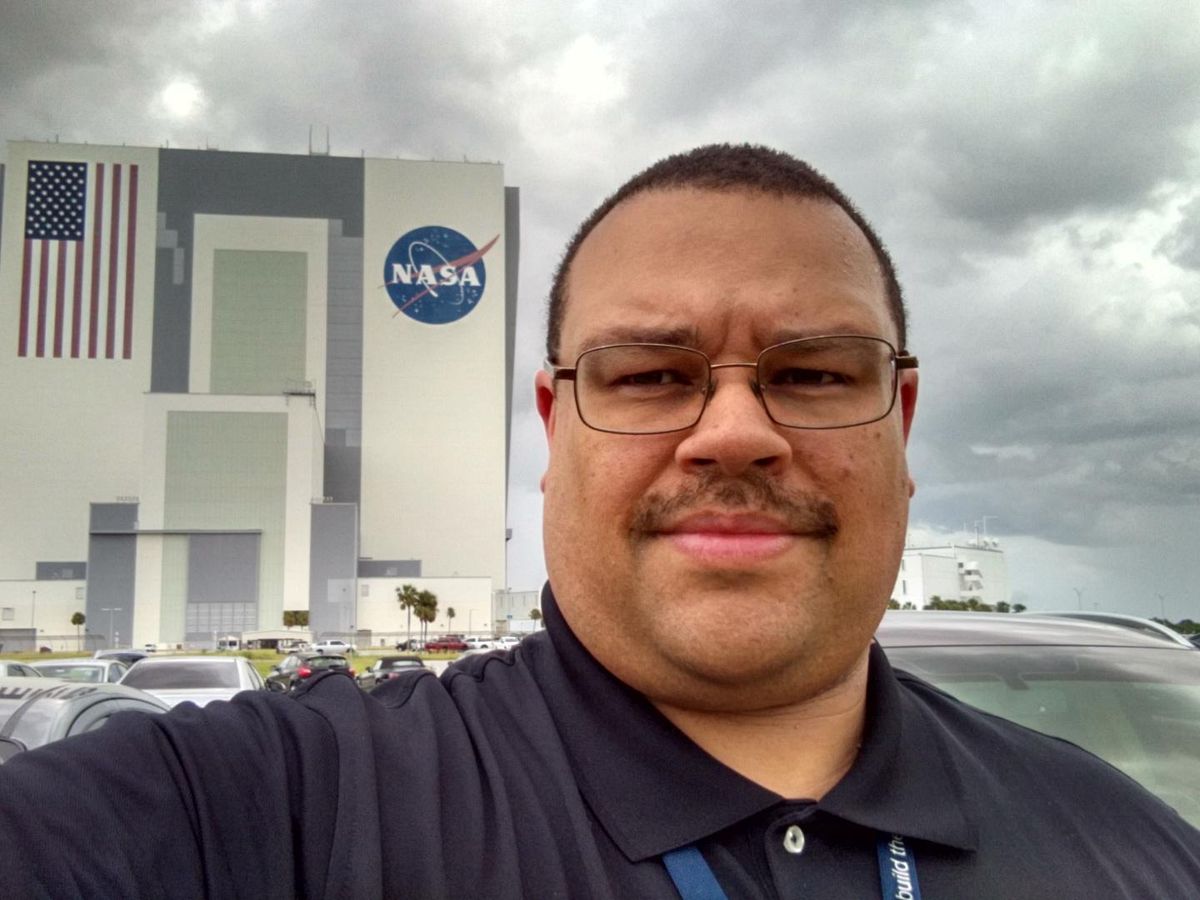"Growing up in the Bowie, Md., area, whenever we drove by NASA's Goddard Space Flight Center, I told my parents that I would work there someday," recounts Proctor, who is now an associate chief at Goddard for NASA's Electrical Engineering Division (EED).
Originally, Proctor was focused on astronomy, but during high school at an engineering exploration summer program he solved "a resistor equivalence problem that nobody else in the class had gotten [and] the instructor recommended I look at electrical engineering as a career instead." He got a master's in EE from Johns Hopkins University. "I started working at Tracor Systems (now part of BAE Systems) in their Standard Missile Program," recalls Proctor. "In 2001, after three years there, an opening at Goddard became available. I applied...and I've been there ever since."
Today, as an associate chief in the EED—one of six senior leaders in the division—Proctor manages the EED's operational budget, and also oversees a major support contract, the Electrical Systems Engineering Services contract. The EED's portfolio includes the Magnetospheric Multiscale (MMS) Mission, International Space Station Cosmic Ray Energetics And Mass (ISS-CREAM), and Neutron star Interior Composition ExploreR (NICER) .
"We have about 300 civil servants and 300 contractors," says Proctor. "We design, prototype, test, and build flight-production units of electronic boards and power systems. This includes reliability testing like making sure that boards are radiation-hardened—or, for the Webb Telescope, vibration-testing the mirror. We usually do the electronic systems overview of a spacecraft and integration and testing for the craft and subsystems. And we do communications for the spacecraft and ground networks."
If you'd like to follow Proctor into space engineering, "you need to take some types of internships," recommends Proctor. "Among other things, this will tell you what you do and don't like. And don't be afraid to reach out to people, especially in the aerospace industry. Introduce yourself and say, I have questions. Do you have someone who will talk with me or mentor me in the field? You'd be surprised how many will share time."
Also: "It's essential to link with industry to get the latest technologies and work with our scientists to incorporate these developments and methods in our designs. For example, 3D printing to build our circuit boards in-house and less expensively; chip design and manufacturing to make smaller parts and boards that fit into CubeSats...and finding ways for smaller, more compact chips that can do multiple functions while meeting size and power constraints."
As a Native American, says Proctor—a member of the Piscataway-Conoy Tribe—"I'd like to see more Native Americans at NASA. I think we bring a unique perspective to space."
"We get recruits through the American Indian Science and Engineering Society (AISES) and the Society of American Indian Government Employees (SAIGE). We have internship opportunities and try to recruit through AISES, and we do career fairs to get high school and college students into STEM/STEAM fields."
Working at NASA can have its perks, Proctor notes. "I got to attend a launch of the MMS spacecraft at Cape Canaveral—at night, with no clouds. It was amazing."
This article appears in the November 2021 print issue as "Marcellus Proctor."
Daniel P. Dern is a freelance journalist. He writes about the careers of engineers as well as a variety of technology topics.



